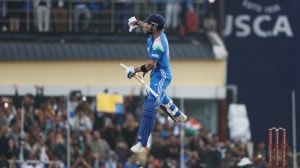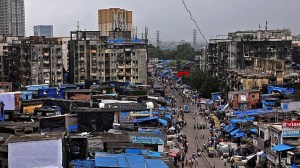Camera’s begun to lie
There is so much wrong with the recent saga involving Uma Khurana, the Sarvodaya Kanya Vidyalaya school...

There is so much wrong with the recent saga involving Uma Khurana, the Sarvodaya Kanya Vidyalaya (Delhi’s Vivek Vihar) school teacher accused of running a prostitution racket, that it is hard to know where to start. But let’s begin with rough justice. A furious mob beats up a woman, creates mayhem, damaging cars and public property and attacking police personnel on the basis of a television programme of dubious credibility. Let’s consider the presumption of guilt: a 40-year-old school teacher is publicly identified as a procuress and physically attacked; degrading visuals of her being beaten up are beamed across the media and she is suspended from her job, on the basis of what now appears to be a frame-up by a personal acquaintance.
Come to the so-called sting itself. According to police, the sting was initiated by a businessman hostile to Khurana. Portions of the footage were possibly doctored and a 20-year-old journalist with a small Noida newspaper was persuaded to make allegations posing as a former student and victim of Khurana’s criminal activities. To give the devil its due, let’s conclude with the media’s point of view. Rashmi Singh, the young journalist who agreed to participate in the show under false pretences, is said to have been tempted by the idea of helping save other innocents. Sudhir Choudhury, CEO of Live India, the channel that conducted the sting, is reported to have defended his channel’s story, maintaining that revelations about the sting-op did not mean Khurana was absolved of her crime. Given the anecdotes dug up by the rest of the media through interviews in the school where Khurana taught, it is possible to claim that Khurana made her students uneasy.
Is that enough? Are lofty intentions and suspicions the basis on which to launch a witch-hunt? To brand a person a criminal, expose him or her to public humiliation and violence? Worse, to offer no means of defence at all?
Several cases have surfaced in recent times where the media and mob fury have combined to create a disquieting sense of miscarriage of justice or of exploitation. Some days ago Mumbai newspapers carried pictures of a man holding a child being beaten up and dragged by a group of maids in a middle-class colony. The allegation was that he had tried to molest his maid. Soon after, the man’s side of the story appeared, which was that, suspecting his maid of theft, he had tried to snatch her identity card, giving rise to the molestation charge. Lending credence was the support of his neighbours who went so far as to band together to prohibit maids from entering the premises until they had tendered an apology, the seriousness of their intentions supported by pictures of couples cleaning and doing the housework themselves. In another case, a man dropping off his daughter at school was targeted by a mob in a case of mistaken identity. And in yet another case mediapersons were invited to cover an agitation against a Net cafe only to discover later that no cafe existed but the signage had been mounted and the entire event had been staged only for publicity.
Evidently, the media has become a space in which individuals and groups of various kinds can play out their grievances and satisfy a range of needs, whether it is to gain attention, take revenge or make justifiable complaints. In a sense one can say this has always been the case, with information and leaks being provided by people who were disgruntled and felt the need to expose others they were in position to observe at close quarters. But earlier there was a sense of control on the part of the media. Today the camera’s ubiquitous gaze and the imperative to compete has created an environment in which it seems as if responsibility can be abdicated. That drama can be created, even stage-managed if need be, and that stories can be allowed to unfold, sometimes representing both sides, with the media taking no stand. Or even ignoring the effects of its intervention. The wife of one targeted victim, for instance, confessed that though the media had told their side of the story, it was difficult because apart from the shame and humiliation the mob had ransacked the flat, which meant that they would have to “start all over again”.
Police action is clearly one solution to counter this growing trend. In some incidents complaints have been filed against attackers as well as the attacked, and in this the camera has been helpful in identifying the former. Talk of reining in the media’s excesses has also been around for a while, most recently in the proposed Broadcast Bill. Commentators from within the media have opposed government intervention — understandably, given our long struggle against government monopoly over the airwaves — preferring internal regulatory mechanisms. But that is easier said than done. The media today has become a huge, amorphous entity. Competition has diminished the sense of fraternity. Common platforms have extinguished borders. Blogs written by individuals can be accessed as easily as established media websites and cable allows one to surf between channels on an equal basis. In such a situation it is hard to set standards or to impose them.
A workable solution would need the active involvement of consumers of the media, for it is they who can arrest falling standards by choosing what to patronise. In a market-driven environment it will have to be the responsibility of the media and citizens both to create a society where the rule of law is less casually flouted.
The writer is a Bombay-based commentator on media and society


- 01
- 02
- 03
- 04
- 05





























